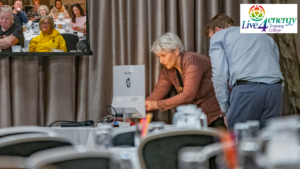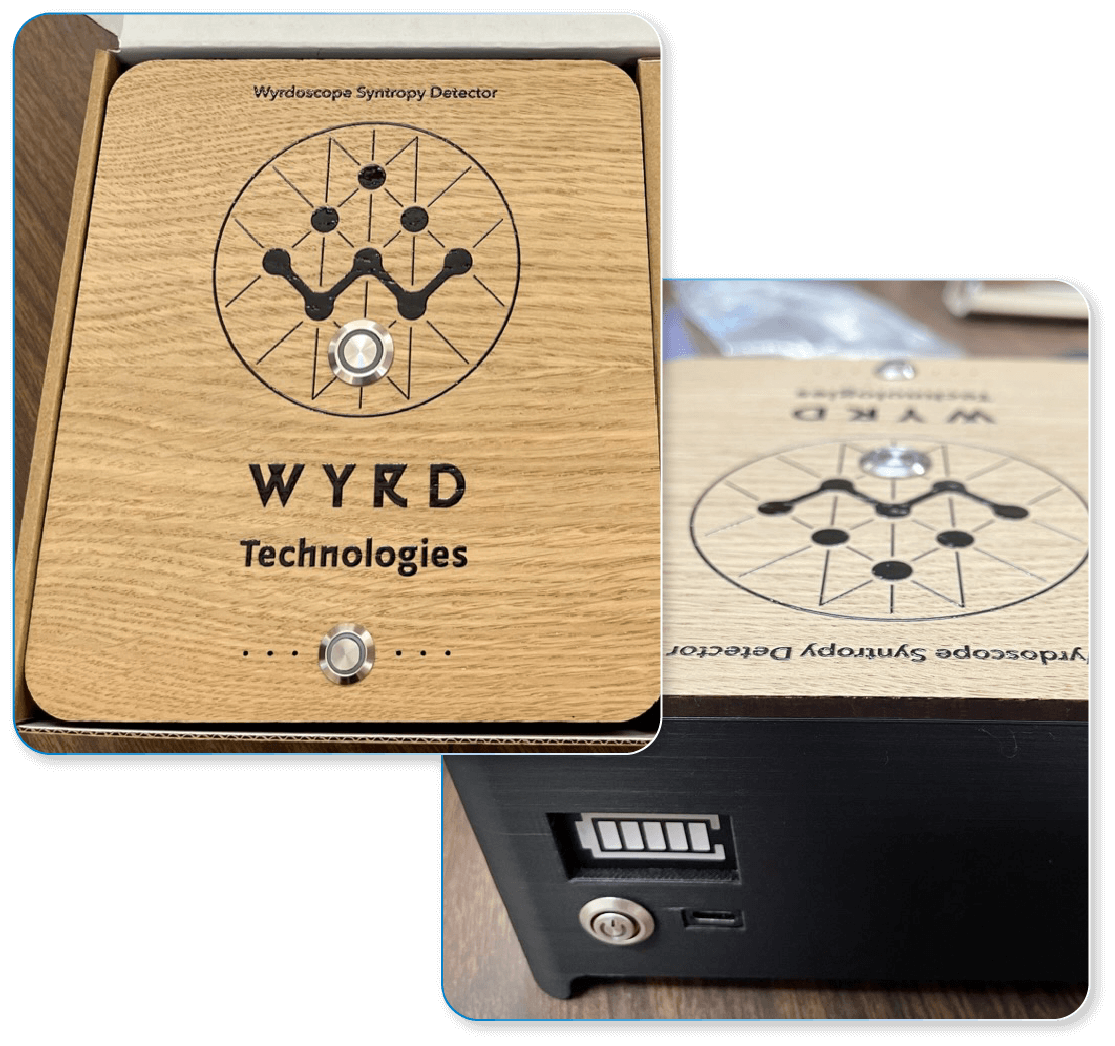Contagious Yawning Social Study
Author: Rachel Earing, Live4Energy Training College
Date: February 2025
Affiliation: The Great Big Yawn CIC, Live4Energy Research Division, Bury, Greater Manchester, UK
Abstract
This qualitative pilot study explores Yawnology — the spontaneous emergence of yawning and its somatic, emotional, and spiritual dimensions — within conversational group settings. Over six consecutive evenings in February 2025, small online groups met at 8:30 pm to talk about yawning, body awareness, and everyday experience.
No yawning was guided, instigated, or demonstrated.
Participants were invited only to give themselves permission to complete yawns if they naturally arose, and to describe their bodily and emotional sensations as they occurred.
Across the six days, participants consistently reported spontaneous yawns accompanied by sensations of deep bodily release, emotional relief, connection, and peace.
Thematic analysis of the transcripts revealed recurring patterns of somatic unfolding — throat, jaw, ribs, hips, and spine — and a collective language of grounding, safety, and “coming home.”
Wyrdoscope – contains 2 random event generators. (go.wyrd.com) data indicated statistically significant coherence peaks during the sessions. These findings support yawning as a natural, relationally mediated coherence response, with implications for emotional regulation and collective well-being.
Introduction
Yawning, though universal across mammals, remains one of physiology’s least understood acts. Research has largely framed it in terms of brain cooling or social contagion (Corey et al., 2016; Gallup & Eldakar, 2011). Yet little inquiry has examined the spontaneous yawn as a psychophysiological and spiritual event emerging within group safety and open conversation.
Live4Energy’s Yawnology initiative seeks to document this phenomenon through qualitative exploration. The project hypothesises that yawning, when permitted rather than performed, reveals natural processes of emotional recalibration, somatic release, and energetic coherence.
This study therefore asks: What happens when a group of individuals simply talk together about yawning, allowing it to occur naturally, and share what they notice?
Methodology
Our Social Survey is to be as total transparant as possible to enable comparision of data to be understood by all abilities. technical language will be kept to a minimum and explained as fully as possible without diluting the information given.
The study is for participants to think about whether the yawning experience is actually related to boredom, apathy and exhaustion and how they feel if they allow themselves to think about it rather as a change of state, what happens?
Between four and seven adults participated each evening from 20 – 26 February 2025 via Zoom. All provided informed consent for transcription and anonymised analysis. Sessions took place in a conversational, non-directive format lasting approximately 30 minutes, with the central 15 minutes forming the analysis window.
Participants were invited to discuss their experiences of yawning and any sensations that accompanied them, to give themselves permission to yawn if it naturally arose, without effort or imitation, and to reflect aloud on what they noticed physically, emotionally, and energetically.
No breathing exercises, visualisations, or postural cues were introduced.
Verbatim transcripts of the sessions, facilitator notes, and Wyrdoscope coherence data were analysed inductively using thematic coding grounded in phenomenological methodology, identifying patterns of somatic experience, emotional response, and spiritual reflection.
Participant Comments from Yawnathon Sessions
6 x 30 Minute Zoom Calls with betweeen 4 – 7 participants each evening
- Somatic Awareness and Sensation Mapping
- “Felt at the very back of my throat and it felt really good because it felt like I’ve completed it.”
- “I can feel a pulse in my throat on the left side.”
- “Felt like the back of my throat was numb, then my eyes felt it stronger & now feel like the back of my neck feels most affected.”
- “Now with my jaw aching.”
- “It started up here near my throat and now it’s moved all the way down to my ribs.”
- “Now it’s at the side of my ribs, underneath my boobs.”
- “I’m feeling it more in my belly now.”
- “My ears are buzzing, my eyes watering like mad, and my nose running.”
- “My jaw was aching then as well, I really wanted to rub it.”
- “It’s gone up the back of my ear into my temple.”
- “A real sense of relief when I completed that yawn.”
- Emotional and Cognitive Reactions
- “Like a reset for my whole body.”
- “It is like having a really good clear out together and without having to divulge any stories.”
- “It makes me feel like I’ve literally not stopped all day and just let go.”
- “All we’re doing is talking about yawning and giving ourselves permission to yawn together.”
- “Lots of tears. If I’m smiling, it seems to go on and on for longer.”
- “The more I become aware of my yawns, the longer they are.”
- “I never thought I’d be able to just yawn. This is very new.”
- “Yawns feel like they’re rolling into one another.”
- Comparisons and Metaphorical Descriptions
- “Like I’m stretching the whole of my face out, even as if I’m a snake.”
- “It feels like I am a snake stretching the whole of my skin and becoming something else.”
- “That one felt like an orgasm, honestly.”
- “It feels like a fizzy pot—stimulates things out of you.”
- “It actually allowed the light to go all the way down into the back of my throat.”
- “Felt like I was going to eat the room.”
- Social and Relational Reflections
- “Group energy makes a real difference.”
- “It’s not even intentional. We’re allowing it to naturally flow.”
- “This is priceless time where I don’t feel as isolated.”
- “You know, all week I’ve been under pressure and now I just feel like I can let go.”
- “The sharing makes it more contagious.”
- “I pushed a yawn back because I didn’t want to be seen on camera with my mouth wide open.”
- “Yawning is such a vulnerable act; we only do it when we feel safe.”
- Health and Body Function Observations
- “Relieved pressure from bloating after pizza.”
- “Helping digestion after steak dinner.”
- “Felt a shift in my ear after a big yawn.”
- “Feels like congestion clearing—like when your ears pop.”
- “Feels like decompressing my body.”
- Reflections on Habitual Yawning and Suppression
- “Before being conscious, my yawns were stifled and really short.”
- “Now I’m allowing them and feeling relief.”
- “Stifling yawns takes energy—why do we do that?”
- “It’s irritating not to complete a yawn.”
- “Felt disappointment when I couldn’t finish a yawn.”
- “Yawning is like meditation.”
Expressed Outcomes and Intentions
- “Felt like I was buzzing around cleaning after the session.”
- “Gonna carry on doing this three evenings a week.”
- “We need to do yawning yoga at the farm with hammocks!”
- “Such a simple and safe way to release trauma.”
- “Mini mindful moments—five minutes to change state.”
- “Infinite possibilities. Always.”

Full Transcripts and Videos are available below for each of the session to compare realtime data too..

Wyrdoscope Data
The Wyrdoscope collects random data from the environment by sending out millions of 0's and 1's randomely into the atmosphere. If the data brings the blue and red line (Bob & Alice) outside the bellshaped curve or entangles together inside the curve this is "interesting data". If any of the 5 channels peak outside of the base line data gathered and inside the time parameters we have selected then this is also "interesting data". We appear to have significant "interesting data" during our YAWNATHON STUDY.
Discussion
This study demonstrates that simple conversation and permission can evoke deep physiological and emotional regulation and a change of state. No cues, breathing patterns, or guided techniques were employed; yawning emerged spontaneously, naturally, and contagiously.
Participants’ language mirrors the lexicon of somatic release, safety, and transpersonal connection without being prompted in those frameworks. The coherence indicated by Wyrdoscope data supports the hypothesis that emotional synchrony is not only felt but measurable within group settings.
Conclusion
The Yawnology pilot evidences that spontaneous yawning, permitted within safe and reflective dialogue, catalyses somatic relief, emotional regulation, and collective coherence. Participants articulated transformation through authentic sensory language: stretching, softening, releasing, connecting, coming home.
In this naturalistic, conversation-led environment, yawning emerged as a language of relief and belonging — a physiological sigh of coherence shared across bodies and screens.
Yawnology thus extends the science of yawning into the territory of lived human experience, offering a bridge between science, spirituality, and collective well-being.
References
Corey, T.P., et al. (2016). Yawning and Thermoregulation: Two Competing Hypotheses. Frontiers in Neuroscience, 10, 512.
Gallup, A.C., & Eldakar, O.T. (2011). The Thermoregulatory Theory of Yawning. Neuroscience & Biobehavioral Reviews, 35(3), 765–769.
Porges, S.W. (2011). The Polyvagal Theory. W.W. Norton.
Nelson, R.D. (2019). Connected: The Emergence of Global Consciousness. ICRL Press.
Earing, R. (2025). The Great Big Yawn: Yawnology Pilot Data (2025). Live4Energy Training College Archives.